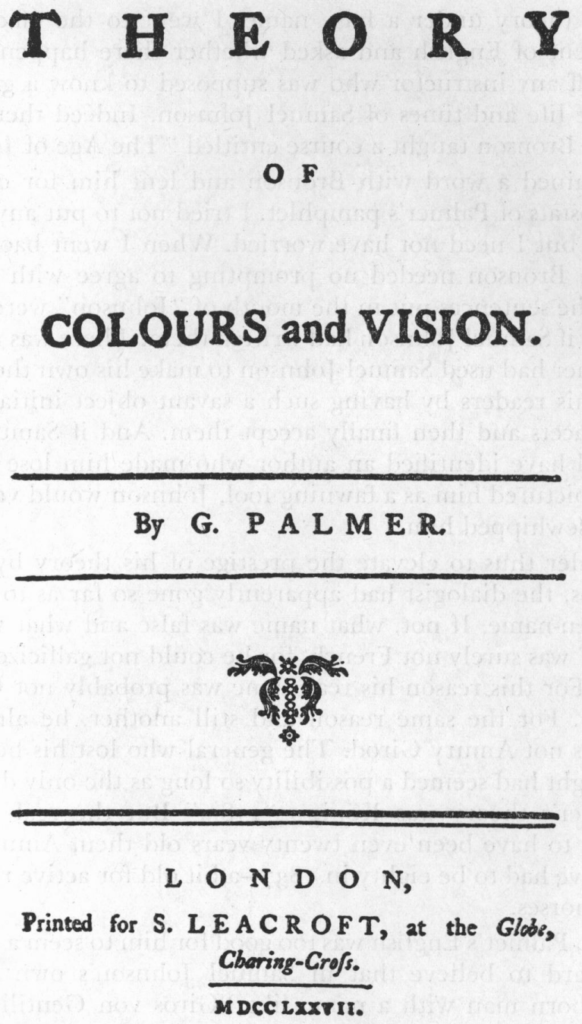I read a fascinatingly anachronistic colorblindness article yesterday that was written in 1956, but reads much more like it was written by a millennial; in fact, it had an uncanny resemblance to the time(s) that CGP Grey lost his mind on tracking down the origin or earliest mention of the name Tiffany.
If YouTube would have existed in 1956, Gordon Walls certainly would have likewise vlogged his experience, but instead, he published it to a journal, where his wacky tangents on beheadings and lamp-fraud and may have gone unappreciated. Instead of the provenance of “Tiffany“, Walls was rather intrigued why the first ever allusion of colorblindness anywhere in European historical literature was [at the time] less than 200 years old, considering that, just as it is now, colorblindness effected 1 in 12 men. He spent many years of his life trying to track down earlier mentions, reading literally every source listed in Helmholtz’s exhaustive 6000+ resource long 1860 bibliography on color vision, the very last of which was quite elusive.
This last resource happened to be G. Palmer’s pamphlet “Theory on Colors and Vision“, published only months before the famous “Harris the Shoemaker” case study became widely circulated as the first recorded description of color blindness (both in 1777). Palmer’s article promised to reveal an older case of colorblindness, but by the time he tracked down the last surviving copy, which just happened to be in Benjamin Franklin’s personal library, he found something much more interesting.
Actually, it was me reading several old, translated color vision papers from MacAdam’s 1970 collection “Sources of Color Science” that introduced me to Palmer, whom I had never heard of, but just like Walls, I was shocked to see that Palmer had included in his 1777 pamphlet a theory of trichromatic vision that mirrored and predated Young’s (later credited as the Young-Helmholtz theory) by a quarter century. It was my search to find why this fact was not more widely known (in color vision circles) that led me to Walls’ article. Hell, I had to add it to Wikipedia myself!
For the rest of the story, read the open source article here. Its a page turner. If you want to read the original Palmer pamphlet, it is not online, maybe I should scan it…

Leave a Reply